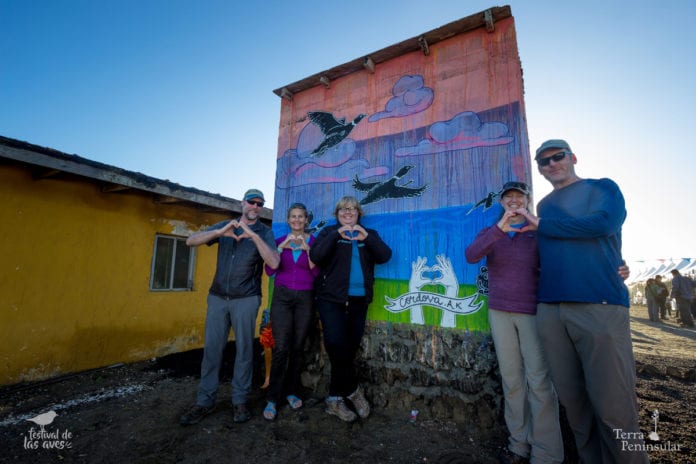
By Bryan Graybill and Erin Cooper
For The Cordova Times
As Alaskan birders polish their binoculars and review their field guides, millions of shorebirds are flapping their way north along the Pacific Coast towards the Copper River Delta and the promise of food and shelter to breed the next generation of migrants. Their arrival in early May will kick off Cordova’s Copper River Delta Shorebird Festival, May 2-5, which will feature three days of birdwatching, lectures and parties, all in honor of our shorebirds. Every year we have the chance to celebrate the arrival of the world’s largest gathering of Western Sandpipers and dozens of other species, but the Copper River Delta is only one stop on shorebird’s annual migration.
In late summer these birds will once again head south and look for coastal wetlands to weather out the winter. Every year shorebirds migrate thousands of miles between Alaska and South America along a route that’s been named the Pacific Flyway, traveling between areas of abundant food, available nesting areas, and summer weather. This life strategy allows shorebirds to always live comfortably when they can find ideal conditions, but threats such as coastal development, loss of habitat, climate change and human population increases along the Pacific have all led to recent declines in shorebird populations. Through international conservation efforts throughout the flyway these birds will be able to continue to find refuge and continue their life cycle.
While the U.S. Forest Service is the primary manager for the Copper River Delta, it is up to conservation and management organizations located in other critical regions to conserve and improve shorebird habitat. Fortunately, shorebirds have fans across the world and this shared appreciation is what has facilitated a growing partnership between Cordova’s Forest Service and Terra Peninsular, a conservation NGO that protects coastal wetland habitat in Baja California, Mexico.
For the second year running, Terra Peninsular has sent up an employee to intern at the Forest Service to help plan Cordova’s Shorebird Festival and work with district staff on developing recreation plans.

“We protect what we love, and we can only love what we truly know,” said Terra Peninsular Executive Director César Guerrero, on the value of the partnership. “The Mediterranean region of Baja California is little known in the world, even within Mexico. This is a great threat because being in a blind-spot is like a death foretold.”
So, when the birds migrate south, so will this year’s intern Vitza Cabrera, taking her newfound knowledge of festivals and recreation management to help Terra Peninsular plan their annual bird festival in November, thereby increasing visibility for the same shorebirds we’ll be welcoming shortly on our shores.

The exchange isn’t just one way though, and in 2018 staff from Cordova’s Forest Service including Wildlife Biologist Erin Cooper and District Ranger Dave Zastrow made their own migration to visit Terra Peninsular during their bird festival in December.
Zastrow found the experience especially useful. “… going to Baja California gave me the opportunity to see the amazing habitat that Terra is managing, the recreation potential, and all the options they have in starting this project,” he said. Terra also has sent past employees and this year Guerrero will visit Cordova.
Ultimately, this kind of cooperation and partnership will be what allows both organizations to succeed in bettering conservation and visibility for imperiled shorebirds, as we learn to share our appreciation for these animals and their habitat across borders and cultures.

Erin Cooper is the Wildlife/Ecology/Forestry Program Manager for the Prince William Sound Zone on the Chugach National Forest. Bryan Graybill is a Student Conservation Association Wildlife Intern with the U.S. Forest Service in Cordova.














